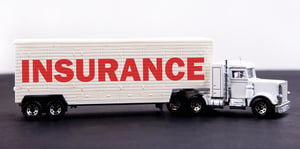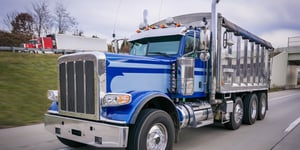 Ask any good insurance agent how to lower Truck Insurance costs, and they’ll tell you to reduce the number and size of your insurance claims. But that isn’t always easy.
Ask any good insurance agent how to lower Truck Insurance costs, and they’ll tell you to reduce the number and size of your insurance claims. But that isn’t always easy.
According to the National Safety Council (NSC), in 2019, 118,000 large trucks were involved in accidents that caused injuries. And often, due to their size and weight, accidents involving trucks tend to be more serious. For example, in 2019, 5,005 trucks were involved in fatal accidents.
According to the Insurance Institute for Highway Safety, “A total of 4,119 people died in large truck crashes in 2019. The number of people who died in large truck crashes was 31 percent higher in 2019 than in 2009, when it was the lowest it has been since the collection of fatal crash data began in 1975. The number of truck occupants who died was 51 percent higher than in 2009.”
Accidents cost your company more than higher insurance rates: lost sales, lost clients, higher administrative costs, time spent managing the aftermath of a truck accident, higher employee turnover, loss of reputation, and the list goes on.
Here are three tips to minimize the risk of a big trucking insurance claim.
Hire Wisely
Spend some time upfront to save yourself time and money down the road, but also be sure you understand the legal requirements for interviewing, pre-employment testing, etc.
-
- Review an applicant’s motor vehicle record
- Conduct a thorough interview
- Include a practical skills interview
- Run the Compliance, Safety, and Accountability profile
- Conduct pre-employment drug testing
- Establish hiring guidelines:
-
-
-
-
-
- Ensure that applicants have a valid driver’s license for the vehicle type and load they will be driving
- Set a time limit on the last chargeable accident, DUI or DWI convictions, serious moving violations, etc.
- Set minimum years of driving experience
-
-
-
-
Develop a Driver Safety Program
All new employees should receive safety training, and ongoing safety training should be required for all drivers. NETTTS offers these tips to create a company driver safety program:
-
- Review Your Company Fleet
-
-
-
-
-
- How many drivers do you have?
- Where do they travel?
- What types of vehicles do they drive?
-
-
-
-
You should include different kinds of learning, such as printed materials, meetings, presentations, and online training that focuses on the following:
-
-
-
-
-
- Safety policies
- Driving policies
- Hours of service
- Vehicle inspections
- Accident procedures
- Security procedures
- Personal safety policies
- Driver responsibilities
- Performance evaluations
-
-
-
-
3. Documentation
Everything related to safety should be well documented, from company safety programs to new hire safety training and ongoing safety training of every employee. In addition, employees should be required to sign paperwork stating they understand your company’s safety processes and what will happen if they fail to follow those processes.
Review Your Insurance Loss Run Report
Your current insurance provider can issue a loss run report, which shows the claims you’ve filed under your business insurance policies – your insurance claims history. You can request this type of report for most types of business insurance.
These reports list the date of each loss and claim, a brief description of each claim, the amount paid to the insured, and whether or not the claim is closed. You can think of it as a credit report or report card for insurance companies. They use the information in the report to determine how risky your business is to insure, which can affect the premium you pay for insurance or even if an insurance company will issue a policy or renew a policy for your business.
You can look at common injuries and claimants and use the information to improve safety. You can also look at other things – such as lost time, open claims, litigation, etc. – to improve other areas of your business and to save on insurance and additional operating costs.
How to Save on Insurance Premiums
An insurance agent specializing in trucking insurance can help ensure you purchase the right coverage. In addition, an independent agent will compare the cost of that coverage with several companies to ensure you pay the lowest amount for that coverage. The independent agents at American Insuring Group have years of experience in Trucking Insurance, so give us a call today at (800) 947-1270 or (610) 775-3848, or connect with us online.



 As an independent truck owner/operator or small fleet owner,
As an independent truck owner/operator or small fleet owner,  Every type of truck – including dump trucks - comes with its own set of unique hazards. If you want to lower the cost of your
Every type of truck – including dump trucks - comes with its own set of unique hazards. If you want to lower the cost of your  Safer drivers mean fewer accidents, and fewer accidents mean lower
Safer drivers mean fewer accidents, and fewer accidents mean lower  If your business owns or uses trucks, you need to have the right
If your business owns or uses trucks, you need to have the right  As more and more risk managers require Cargo Insurance, it’s essential to understand how it fits in with your
As more and more risk managers require Cargo Insurance, it’s essential to understand how it fits in with your  Cargo Theft is a $15 to $35 billion industry that can drive up
Cargo Theft is a $15 to $35 billion industry that can drive up 
 If you want to lower workers’ compensation insurance costs in your trucking company, the solution is simple! Provide safety training to lower the number of injuries, cultivate happier and more productive employees, and lower your WC costs.
If you want to lower workers’ compensation insurance costs in your trucking company, the solution is simple! Provide safety training to lower the number of injuries, cultivate happier and more productive employees, and lower your WC costs.  Truck drivers face many things they can’t control as they drive from point A to point B delivering their cargo – inclement weather, traffic, road construction, distracted drivers, and the list goes on.
Truck drivers face many things they can’t control as they drive from point A to point B delivering their cargo – inclement weather, traffic, road construction, distracted drivers, and the list goes on. American Insuring Group specializes in trucking insurance, and we’re independent agents, so we’ll make sure that your commercial vehicle has the best insurance protection at the lowest price (unlike many of our competitors, we’re not locked into one solution).
American Insuring Group specializes in trucking insurance, and we’re independent agents, so we’ll make sure that your commercial vehicle has the best insurance protection at the lowest price (unlike many of our competitors, we’re not locked into one solution).



